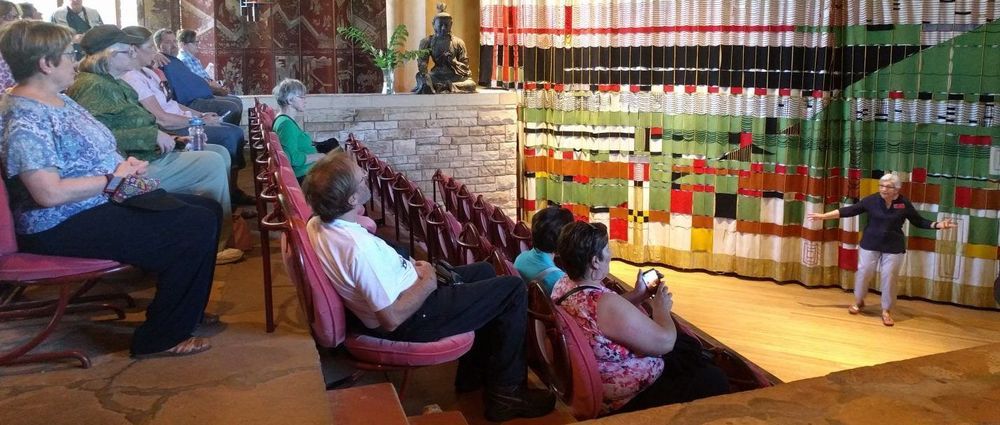How well will they do, and is life extension accurately portrayed in popular fiction? Let’s find out!
Get the latest international news and world events from around the world.


Tours: I went to Taliesin West In Scottsdale, though I think Of it as Phoenix With my so, Jerry
Taliesin Preservation offers a variety of tours of the Taliesin estate in Spring Green, Wisconsin. These tours are designed for every level of interest. Booking tours in advance is strongly recommended. Tours often sell out, so book well in advance of your preferred tour date. Walk-ins are accommodated with space permitting.

Is death optional? ⇒ Kirno Sohochari
Merging of human biological arrangements with nonbiological machine hardware is perhaps not fairy at all. Futurist Ray Kurzweil mentioned his fairy dream over again that the historic Homo sapiens are not so far remote to the fifth epoch revolution. They human species is cramped to leave their biological genes and sluggish brain circuitry to merging them with the electrified hardware and fastest machine intelligence. Merging with electrified intelligence is unavoidable because of the slow computation power of human brain circuitry. Information processing and its exchanging ratio of a biological brain are extremely sluggish compared to the nonbiological brain. Despite its amazing innovative capacity of thinking, envision or consciousness, the human brain looks crawler if a goosey person even observes the current computation pace of nonbiological machine-brain for instance.
… Daniel Kahneman’s evidential works help readers summate the conclusion that the battle amid desire and choice is not an episodic whiff of latter, nor anybody can consider it a consequent tethering of modernity, rather the prehistoric beginning was also alluring by this in a bit different context. Memory-preserver neuron cells how to make a deep impact on human happiness levels have appeared crucial in Kahneman’s investigation. … …
Harari’s conversation with Kahneman echoed his historical findings that how human species manipulate Nature in an excuse to achieve individuality and happiness. He put forward statistical references to establish his findings of the behavioral shifting of human civilization; that is,— the personification of Naturebond life then diverts human species to a different track. They missed the integrity of taking Holistic View that a ‘piece or segment’ is ultimately the part of a ‘whole’ and any partial piece or segment never sustains long if it failed attached itself to the whole. Lil bit reminder of Chief Seattle’s Letter may relevant here. It is said that the native leader once wrote a letter to the President of the United States addressing the burning land settlement issues against his tribe:
How can you buy or sell the sky, the warmth of the land? The idea is strange to us… If we do not own the freshness of the air and the sparkle of the water, how can you buy them?… So, when the Great Chief in Washington sends word that he wishes to buy our land, he asks much of us… The air is precious to the red man for all things share the same breath, the beast, the tree, the man, they all share the same breath. The white man does not seem to notice the air he breathes. Like a man dying for many days, he is numb to the stench. But if we sell you our land, you must remember that the air is precious to us, that the air shares its spirit with all the life it supports… This we know; the earth does not belong to man; man belongs to the earth. This we know. All things are connected like the blood which unites one family. All things are connected. [See: Chief Seattle’s Letter to the President of the United States: Ted Perry’s version from the movie ‘Home’ ].



The Healthiest People in the World Don’t Go to the Gym
If you want to be as healthy as possible, there are no treadmills or weight machines required.
Don’t just take my word for it — look to the longest-lived people in the world for proof.
People in the world’s Blue Zones— the places around the world with the highest life expectancy — don’t pump iron, run marathons or join gyms.


Tardigrade DNA Added to Human Cells Could Help Us Survive on Mars, Scientist Says
SOME Geneticists scare the hell out of me??? AEWR.
Will we one day combine tardigrade DNA with our cells to go to Mars?
Chris Mason, a geneticist and associate professor of physiology and biophysics at Weill Cornell University in New York, has investigated the genetic effects of spaceflight and how humans might overcome these challenges to expand our species farther into the solar system. One of the (strangest) ways that we might protect future astronauts on missions to places like Mars, Mason said, might involve the DNA of tardigrades, tiny micro-animals that can survive the most extreme conditions, even the vacuum of space!
